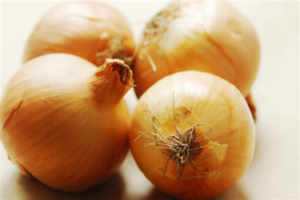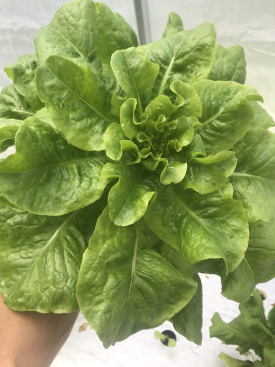
How to Grow Hydroponic Lettuce is actually incredibly simple! So lets dive into this together and get some lettuce growing.
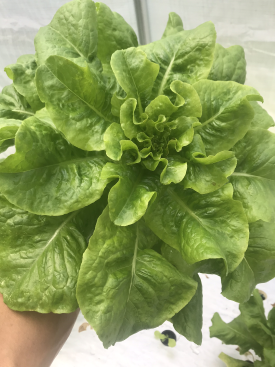
Lettuce is a favorite crop among hydroponic growers. And being one of the easiest crops to grow hydroponically, it is a great vegetable to start with as a beginner. And that’s what this website is geared towards!
Hydroponic lettuce is easy to maintain, it grows fast and doesn’t take up much space. Which makes it easy to be grown in a controlled environment.
That said, this article will cover everything you would like to know about growing lettuce hydroponically.
What is Hydroponic Lettuce?(Lactuca Sativa)
Hydroponic lettuce is a leafy vegetable that is not supposed to go all the way to the flowering phase.
That being the case, its nutrient solutions are simple and they don’t need to change at any point over its growing season.
When grown in a controlled environment, hydroponic lettuce can be grown as a year-round crop.
The best thing about it is that it grows rapidly.; in that, you can get your first edible leaves in precisely 3 weeks and in about 40-80 days you can harvest a full head.
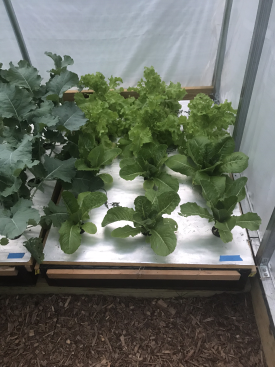
Growing in a floating raft (Kale Romaine Butternut crunch)
The crop doesn’t necessarily need to be exposed to direct sunlight and even in low temperatures, it grows pretty well.
When you harvest your hydroponic lettuce one leaf at a time, you can extend its growing season or even the whole head. This entirely depends on your desire and needs. You can essentially just clip a few inches from each head and have lettuce all summer. It actually does work!
Hydroponic Lettuce at Home
Choose High-Quality Lettuce Seeds
There is a wide range of lettuce that you can grow using the hydroponic system. You could either go for the Romaine which is a pretty great option but tends to take longer to grow. For high quality seeds i like johnny seeds.
On the other hand, we have the Tom Thumb which is a great choice if you are trying to take up much less space.
Or Bib lettuce which is the easier variety to grow. i personally love butternut crunch, as you will see in the images taken from my greenhouse.
Choose the Ideal Growing Medium for the Lettuce
Stone wool or rock wool starter and peat pellet are the best options for a growing medium for your lettuce seeds. The rock wool provides an almost perfect oxygen to water ratio while maintaining a neutral ph. Providing links to Amazon to help those looking to begin in assembling their products. Using them is appreciated however not required!
Germinating seeds for hydroponics will be be somewhat more costly on the front end. Given the cost for the rock wool, grow lights, nutrients, etc. However in the long term it will easily be recuperated given the amount of plants that can be grown from seed. When the seed comes out of its dormant stage the radicle will crack. Its important to keep the seeds warm and moist for this to occur. I like to use a heat mat. Once you begin to see the first signs of growth do not hesitate in getting those grow lights just a few inches above the seedlings. This will prevent any leggy sprouts. Once you have 2 or 3 sets of “True Leaves” this is when you can transplant!
Within 7-14 days, germination will occur.
You should then transfer the seedlings to a hydroponics system such as the Deep water culture. Dark and colored plastics are the best choice when setting up hydroponic gardens. If you are using the dutch bucket method i would recommend you paint them black. It will definitely keep the algae under control.
Supply Nutrients to your Hydroponic System
The nutrient solution that you choose for your hydroponic system has a crucial role to play in the successful growth of your hydroponic lettuce. I have honestly experimented with many solutions! Here is a list of my top recommendations.
Harvest the Lettuce in 5 Weeks’ Time
Your hydroponic lettuce will be ready in 4-5 weeks. During the growing period, ensure that the lettuce is not exposed to direct sunlight.

Too much sunlight will make the plants stressed which eventually will lead to bolting! I have an article on that topic also. Bolting will not only affect the taste of your leaves by making them bitter but also change the general texture of the product you get.
Growing Requirements and Hydroponic Lettuce Nutrients
Lettuces are generally considered as undemanding for crops that you can grow hydroponically. All in all, they still need some special care to give you the best results.
Here are a few things that you need to pay attention to for optimal results
Temperature
Without a doubt, hydroponic lettuces prefer cooler temperatures. When grown in very high temperatures, there is a higher chance of bolting or flowering which is a very undesirable event.
That is because it tends to turn the lettuce leaves bitter. That said, when growing lettuce hydroponically you should ensure that the day temperatures range between 20 and 23 degrees Celsius and never at any point exceeding 25 degrees Celsius. That would be 77 degrees Fahrenheit.
Temperatures above that point quickly facilitate bolting. Temperatures that are even slightly lower than this will be helpful for the lettuce at night. Such temperatures ideally should range from at least 15 to 18 degrees Celsius.
PH
To get the best out of your hydroponic lettuce, it is best if you grow it in a medium with a PH value of 5.5 to about 6.5. The heat tends to cause this to fluctuate a bit. So check it often during those heatwaves if the environment is not controlled.
The Light Exposure Duration
Lettuce is one of the few plants that are very forgiving when it comes to light exposure. This is to say that precisely 06-08 hours of low or moderate light is ideal for growing your hydroponic lettuce. Certainly does not by any means that you could not grow successfully with 5 or 6 hours. Just will take a bit longer.
Growing hydroponic lettuce where it is exposed to direct sunlight makes the lettuce leaves bitter and in some extreme cases causes bolting. The light quality that you get in some cases tends to affect the color that the red-leaf lettuces acquire.
When the light is too low, the red pigment in the red varieties known as anthocyanin is not produced anymore.
That said, if you are planning on growing some red lettuces, you need to equip yourself with some supplemental light sources.
The Growing Media
Hydroponic lettuce can be grown either in the Deep water culture system, or the Nutrient Film Technique. In such a case, there is a solid growing medium that comes in form of substrate.
This is included in the growing media in order to enable the lettuce seedling sprout and to offer basic support to the roots as the plant grows.
There is a wide range of substrates that you can use to sprout your lettuce seedlings, some of these include; phenolic foam and stone wool. Some of the other popular choices include; peat moss and coconut coir that in most cases is stabilized with either a mesh warp or a chemical binder.
The real growing medium where your lettuce crops will grow is a water nutrient solution. This water nutrient solution is aimed at pushing the plants to a vegetative phase without going all the way to the flowering phase. Therefore, the solution requires an N.P.K ratio that has high nitrogen, a bit of phosphorous and very little potassium.
There might be some lettuce varieties that are claimed to be tolerant of very low levels of oxygen. However, if you want to get the best yields, you need to grow the plants in a well-aerated area.
The most ideal concentration of the dissolved oxygen in the water nutrient solution should be at least 8ppm. (parts per million)
How to Grow Lettuce Using the KRATKY Method?
Getting started on growing hydroponic lettuce is easier than it actually seems. The best part is that you don’t necessarily need huge and expensive equipment for you to set up your hydroponics system.
That said, we are going to discuss an exciting system that’s both easy to use and set up. Best of all, one of the most ideal systems for anyone who’s just starting out in the hydroponics world. This is known as the Kratky hydroponics method.
So,what is the Kratky Method?
This is a method that was discovered by B.A Kratky who studied at the University of Hawaii. In simpler terms, we can say that the Kratky method resembles the deep water culture only that this one doesn’t come with a pump.
Among the 6 known types of hydroponics systems, the Kratky is the easiest of them all. This system doesn’t need any electric devices or electricity for it to run. Most people actually say that the Kratky method is a ‘set and forget’ one. In that, once it is set up, you just let the plants to do their thing until they are ready for harvest.
The Kratky method is a passive system that doesn’t need constant supervision, it doesn’t require any electricity, it doesn’t need any wicks or pumps for it to operate.
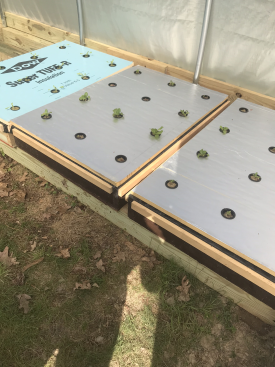
Floating raft method
On the same note, growers don’t need to worry about having to change the nutrients present in the reservoir every now and then. I wouldn’t be wrong to say that the Kratky method is a system that is in a position to work for several weeks with little maintenance.
How Does the Kratky Method Work?
As we all know, for plants to grow in a healthy way, they need moisture, light, and oxygen. In addition to that, they need macro and micro nutrients to reach their full potential.
The Kratky method is a simpler way of making all these things available to the plants in a simple way.
In that, the nutrients are added in a reservoir, the plants are then placed in a net pot that has the growing media like rock wool or peat moss, it is then held by a lid and hung above the water.
This leaves the roots of the plants partly submerged in the water nutrients and part of it exposed to the air. This ensures that the plants get both oxygen and moisture without having to compromise on the other.
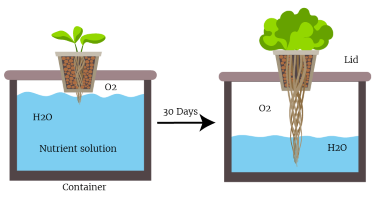
Conclusion
This may seem like a lot of information to take in. It is fairly straight forward if you follow the recommendations. With the length of time required for transplants you can easily have seedlings growing in various stages. And always have a continual supply of lettuce for our household or a small community. If you are interested in building a system that is affordable and practical. Take a look at the video below.


